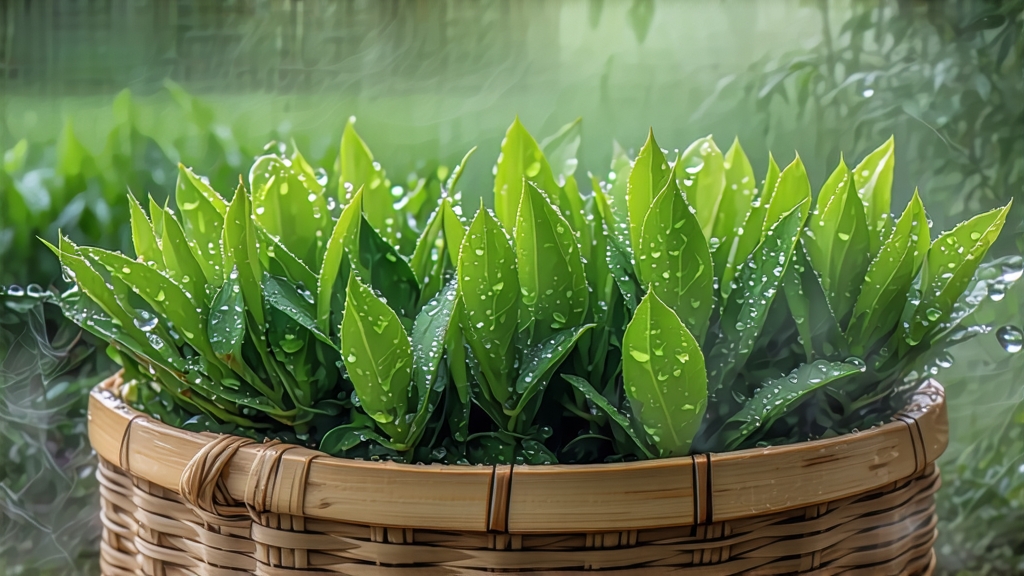
Biluochun, whose name translates literally to “Green Snail Spring,” is one of China’s ten most celebrated teas, yet it remains a quiet revelation for many international drinkers. Produced almost exclusively in the lake-studded hills around Dongting Mountain at the heart of Taihu Lake in Jiangsu Province, this tea is prized for its improbably tiny, spiral-shaped leaves and an aroma so fragrant that, when first exported in the eighteenth century, European botanists suspected it had been scented with tropical fruit. In truth, no perfume is added; the scent is the work of terroir, season, and a curing craft that has been refined since the late Ming dynasty.
Historical records first mention the tea under the more modest name Xia Sha Ren Xiang—“Scary-Fragrant”—after a tea-picking girl in 1675 reportedly filled her apron with fresh buds, only to have her body heat inadvertently “fix” the leaves, releasing an intoxicating perfume. Local monks recognized the potential, perfected gentle pan-firing techniques, and presented the result to the Kangxi Emperor. The emperor, charmed by the curled shape and spring-harvest provenance, rechristened it Biluochun in 1699. The name stuck, and imperial favor lifted the tea from monastic obscurity to national fame.
Although Biluochun is botanically Camellia sinensis var. sinensis, the Jiangsu microclimate gives it a distinct chemical signature. The Dongting peninsula is actually an island chain; morning mist rising from Taihu’s vast surface filters ultraviolet light, slowing photosynthesis and increasing amino acids, especially L-theanine. The same humidity encourages a natural coexistence with fruit trees—peach, plum, apricot—whose blossoms share the April air with tea bushes. Bees shuttle between petals and leaf, and the nectar they carry subtly alters the surface chemistry of the buds. When the leaves are heated, terpenes and esters derived from these blossoms volatilize, creating the tea’s signature fruity bouquet.
The picking window is brutal: only fourteen days, from the Qingming festival around April 4 to Guyu on April 20. During this period, each bush pushes a single tender bud flanked by an unfolding leaf, a standard known in Chinese as yi ya yi ye. Experienced pickers break 1.2 centimeters of stem so that the bud remains sheathed in its minute protective capsule; this prevents oxidation en route to the village workshop. A full kilo of finished tea demands roughly seventy thousand such snips, all performed before 9 a.m. while dew still glistens. Any later, and rising temperatures activate enzymatic browning that dulls the brilliant jade color.
Withraw material so delicate, the crafting process is less manufacturing than choreography. The traditional sequence—withering, fixation, rolling, and drying—collapses into a single, uninterrupted hand dance performed on a bamboo tray heated to 180 °C. A master handler, usually a woman in her fifties whose palms are calloused yet sensitive, tosses 250 grams of buds across the wicker surface for exactly nine minutes. Fingertips flick, press, and roll in alternating spirals, coaxing moisture out while bending each sprout into the iconic curl. The motion must be vertical first, to drive off steam, then horizontal, to lock in fragrance. One extra minute and the leaves oxidize; one minute short and residual grassy astringency lingers. When done correctly, the tea exits the tray at 6 % moisture, cool enough to snap cleanly yet pliable enough to retain its spiral under gentle pressure.
Modern factories replicate the process with drum heaters and conveyor belts, but the highest grades—Special Grade #1 and Supreme “Seven-Peak” picked above 300 m elevation—are still entirely handmade. Government regulations stipulate that only leaf from Dongting Dongshan and Xishan villages may carry the official “Original Locale” seal, a measure akin to French AOC. Counterfeit Biluochun, often produced in Sichuan or Guizhou where labor is cheaper, tends to use larger leaf stock scented with artificial lychee essence; the deception is revealed when the infusion fails to deliver the tea’s hallmark cooling finish, what locals call houyun, or throat charm.
To unlock that charm, water choice is paramount. The classical text Cha Jing counsels “water from the center of a living river,” advice that translates today into low-TDS spring water with neutral pH. Heat to 75 °C—any hotter scalds the downy hairs coating each bud, releasing bitter c